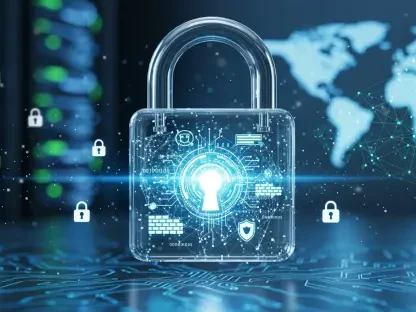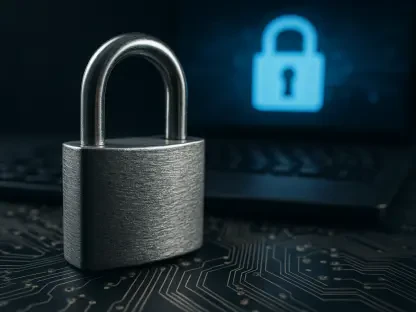The rapid proliferation of mobile devices and Internet of Things (IoT) systems has revolutionized our daily lives, offering unprecedented convenience and connectivity. However, this technological advancement comes with significant cybersecurity challenges. As these devices become more ingrained in both personal and professional settings, the question arises: Are we doing enough to secure them? While the convenience they bring is undeniable, their growing presence also dramatically expands the potential attack surface for cybercriminals to exploit, endangering both individuals and enterprises alike.
The integration of IoT devices from smart homes to industrial setups has ushered in a new era of connectivity, but it has also introduced myriad cybersecurity risks. Many of these devices, particularly those sold at low prices online, are riddled with vulnerabilities, making them attractive targets for cybercriminals. The vast number of IoT devices in use today, from smart thermostats to connected security cameras, further amplifies these concerns. Without standardized security measures in place across various manufacturers, consumers are left exposed to significant threats, raising alarms for industry experts and cybersecurity professionals.
The Growing Cybersecurity Risks of IoT Devices
IoT devices, especially those used in smart homes, have historically been overlooked in terms of cybersecurity. Despite their appealing low prices and advanced functionalities, many of these devices are riddled with vulnerabilities that can be easily exploited by cybercriminals. This neglect in securing IoT devices stems from manufacturers prioritizing cost and convenience over robust security features. As these interconnected devices proliferate, each one becomes a potential entry point for hackers, allowing them to infiltrate networks and access sensitive information.
The lack of standardized security measures across different manufacturers further exacerbates the issue. Consumers often find themselves purchasing products without being fully aware of the potential risks associated with them. Unfortunately, low-cost devices are frequently the most vulnerable, presenting hackers with easy targets. The widespread use of these devices in everyday life—from smart speakers to connected refrigerators—illustrates the magnitude of the problem. Every compromised device represents a potential breach point, endangering both personal privacy and national security.
Moreover, the potential consequences of IoT device insecurity are far-reaching. Cybercriminals can exploit these vulnerabilities to launch large-scale attacks, such as Distributed Denial of Service (DDoS) attacks, which can cripple entire networks. The infamous Mirai botnet attack, which hijacked countless IoT devices to disrupt major websites, is a glaring example of the destructive power these devices can wield when left unprotected. As the IoT ecosystem continues to expand, the urgency to address these cybersecurity challenges becomes ever more critical.
Emerging Regulations: A Step in the Right Direction
In response to mounting concerns about IoT security, governments worldwide have begun to implement more stringent regulations aimed at safeguarding these devices. Notable examples include the European Union’s Cyber Resilience Act and Australia’s upcoming Cybersecurity Bill 2024. These legislative measures set forth rigorous security standards for smart devices, thus aiming to mitigate risks and enhance consumer protection. They mandate that manufacturers adhere to comprehensive security protocols throughout the device lifecycle, from design to deployment, profoundly shaping the regulatory landscape.
The NIS 2 Directive within the EU represents another significant regulatory development. This directive aims to bolster the security and resiliency of networking and information systems across member states, ensuring a cohesive and concerted defense against cyber threats. Moreover, these regulations underscore the necessity for consistent enforcement to ensure manufacturers comply with the established standards. However, their implementation and enforcement will be crucial to their success. Without strong adherence, these regulations may fall short of their intended impact, leaving gaps that cybercriminals can exploit.
While the introduction of these regulations is a positive step towards fortified security, their effectiveness will depend significantly on the collaboration between government bodies, regulatory authorities, and the private sector. Industry stakeholders must actively participate in refining and updating these standards to keep pace with evolving threats. Furthermore, public awareness campaigns can play a pivotal role in educating consumers about the importance of device security, encouraging informed purchasing decisions, and advocating for better industry practices.
Despite the progress made through these regulatory efforts, challenges remain. Smaller manufacturers, in particular, may struggle to meet these stringent requirements due to limited resources and expertise. Therefore, support from larger industry players and government subsidies may be necessary to ensure that all manufacturers, regardless of size, are capable of producing secure devices. Ultimately, for these regulations to be truly effective, a multi-faceted approach that involves continuous monitoring, regular updates, and broad-based industry collaboration is essential.
The Role of Consumer Awareness and Vigilance
Even with emerging regulations in place, consumers must remain vigilant about the security of their devices. Many IoT products still lack adequate security features, making it essential for individuals to take proactive measures to protect themselves. This includes being cautious of low-cost devices that may have hidden vulnerabilities and prioritizing products from reputable manufacturers known for their commitment to security.
Social engineering scams and malware attacks are increasingly sophisticated, often targeting mobile devices and social media platforms. Cybercriminals use these platforms to deceive users into revealing personal information or installing malicious software. Therefore, staying informed about these threats and adopting best practices is crucial. Regularly updating software, using strong, unique passwords for each device, and employing multi-factor authentication (MFA) are key steps in safeguarding personal data.
Education and awareness play vital roles in enhancing consumer security. Public campaigns, educational materials, and easily accessible resources can empower users with the knowledge needed to make informed decisions about their devices. Additionally, fostering a culture of cybersecurity mindfulness can significantly reduce the likelihood of falling victim to scams and attacks. Consumers must recognize that their vigilance is a critical component in the broader effort to secure the digital landscape.
Furthermore, industry stakeholders can support consumer efforts by offering robust customer support and clear guidance on securing their devices. Providing regular updates, promptly addressing security vulnerabilities, and offering easy-to-follow security recommendations can enhance consumer trust and encourage better security practices. Collaboration between manufacturers, service providers, and cybersecurity professionals is essential to create a safer environment for all users.
As the digital landscape evolves, the importance of consumer vigilance cannot be overstated. While regulations and industry efforts are crucial, the collective responsibility of individual users in maintaining secure practices is equally important. By staying informed, adopting best practices, and remaining cautious, consumers can significantly contribute to the overall security of mobile devices and IoT systems, thus helping to create a more resilient digital future for everyone.
Enterprise Security Strategies: Integrating IT and OT
For enterprises, the integration of information technology (IT) and operational technology (OT) security is crucial in today’s interconnected world. Many organizations continue to treat these domains separately, resulting in significant security gaps that cybercriminals can exploit. A holistic approach that acknowledges the interconnectedness of cyber-physical devices is essential for building robust security frameworks and ensuring comprehensive protection against diverse threats.
The NIS 2 Directive exemplifies the need for such integration, requiring EU member states to enhance the security and resiliency of their national systems. This directive emphasizes the importance of a unified security strategy that addresses both IT and OT components, as both are critical to maintaining the integrity of essential services and infrastructures. However, research indicates that many organizations are not fully prepared to handle cyber-physical system compromises, highlighting the urgent need for improved IoT security strategies.
A comprehensive approach to enterprise security involves the continuous collaboration between IT and OT departments, fostering an environment where information sharing and joint decision-making are prioritized. This collaboration can help identify potential vulnerabilities, streamline response efforts, and mitigate risks more effectively. By breaking down the traditional silos between these domains, organizations can develop a cohesive security strategy that encompasses all aspects of their operations.
Furthermore, enterprises must invest in advanced security technologies and solutions that can detect and respond to threats in real-time. Implementing intrusion detection systems, network monitoring tools, and robust encryption methods can significantly enhance the security posture of an organization. Training employees on cybersecurity best practices and conducting regular security audits can further bolster defenses and ensure preparedness against potential attacks.
The rapidly evolving threat landscape necessitates a proactive approach to security. Enterprises must stay ahead of emerging threats by continuously updating their security measures and adapting to new challenges. This includes staying informed about the latest industry trends, participating in cybersecurity forums, and collaborating with external experts to develop innovative solutions. By embracing a dynamic and forward-thinking security strategy, enterprises can better protect their assets and ensure the continuity of their operations.
Manufacturers’ Responsibilities in a Changing Landscape
Device manufacturers play a critical role in enhancing the security of IoT systems, particularly as regulatory requirements evolve. As these requirements become more stringent, manufacturers must adapt by improving their security processes. This includes fostering greater collaboration between product security and cybersecurity teams and ensuring effective communication between engineering and cybersecurity departments to integrate security considerations into every stage of product development.
Small manufacturers, in particular, face significant challenges in meeting these new standards. Limited resources and expertise can hinder their ability to implement robust security measures. However, by adopting a proactive approach and integrating security practices from the ground up, they can better protect their products and consumers. The shift towards DevSecOps, which emphasizes the integration of security into the development process, is becoming increasingly necessary for manufacturers to stay ahead of emerging threats.
Collaborating with industry partners, participating in standard-setting organizations, and seeking guidance from cybersecurity experts are essential steps for manufacturers. By engaging with the broader cybersecurity community, manufacturers can gain valuable insights and access to best practices that can help them enhance their security processes. Additionally, manufacturers should invest in employee training and development to ensure that their workforce is equipped with the necessary skills and knowledge to address security challenges effectively.
The evolving regulatory landscape also presents opportunities for innovation. Manufacturers that prioritize security and demonstrate a commitment to protecting consumers can differentiate themselves in the market. By building trust and establishing a reputation for producing secure devices, manufacturers can gain a competitive advantage and drive consumer confidence. Transparent communication about security practices, regular updates, and a clear commitment to addressing vulnerabilities can further enhance customer relationships.
As the security landscape continues to evolve, manufacturers must remain agile and responsive to new challenges. Regularly reviewing and updating security processes, staying informed about regulatory changes, and actively participating in the cybersecurity community are crucial for maintaining a robust security posture. By embracing these practices, manufacturers can play a pivotal role in creating a safer digital ecosystem for all users.
The Path Forward: Collaboration and Holistic Approaches
The path forward in securing mobile devices and IoT systems involves a collective effort from all stakeholders, including governments, industry players, and consumers. Strengthening collaboration between these groups is essential to address the multifaceted cybersecurity challenges effectively. Enhanced communication, shared knowledge, and unified strategies can significantly bolster the security of interconnected devices and systems.
Governments must continue to play a critical role in setting and enforcing stringent security standards, while also providing support and resources to smaller manufacturers to help them comply with regulations. Industry stakeholders should actively participate in developing and refining these standards, ensuring they are practical and effective in combating evolving threats.
Consumers must remain vigilant and informed about cybersecurity best practices, understanding the importance of securing their devices and making informed purchasing decisions. Public awareness campaigns and educational initiatives can empower consumers with the knowledge and tools needed to navigate the digital landscape safely.
Ultimately, a holistic approach that combines regulatory measures, industry innovation, consumer vigilance, and collaborative efforts will pave the way for a more secure future for mobile devices and IoT systems. By working together, we can mitigate risks, protect sensitive information, and ensure the continued benefits of technological advancements without compromising security.









